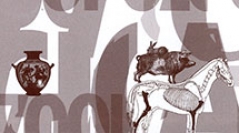

 Anthropozoologica
47 (2) - Pages 77-98
Anthropozoologica
47 (2) - Pages 77-98This paper discusses the archaeozoological evidence from Neolithic Ulucak Höyük (İzmir, ca. 7000-5700 cal. BC) in light of current debates on early dairy technologies. The paper aims to add new dimension to the current understanding of the role western Anatolia played in the evolution of early animal husbandry systems towards wider applications of dairy technologies. The evidence from Ulucak can potentially shed important new information on how these technologies were exchanged across the European-Anatolian frontier. To explore the appearance and evolution of milk use at Ulucak, the paper evaluates two main lines of archaeozoological data: mortality profiles – the most tangible archaeozoological evidence to detect the ways in which domestic animals were exploited (Payne 1973; Vigne and Helmer 2007), and diachronic changes in the contribution of cattle to subsistence economy, with reference to Evershed et al. (2008)’s proposal about a cattle-dairy link in northwestern Turkey. Results from Neolithic Ulucak are assessed in the context of relevant evidence from neighbouring sites in western Anatolia.
Neolithic dispersals, Anatolia, Ulucak, archaeozoology, milk exploitation, secondary products, animal husbandry, mortality profiles.